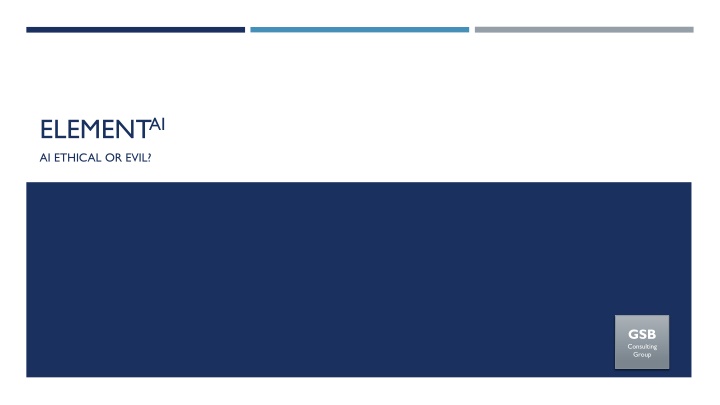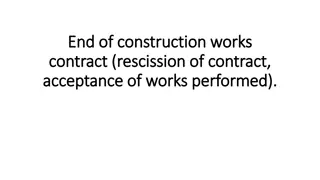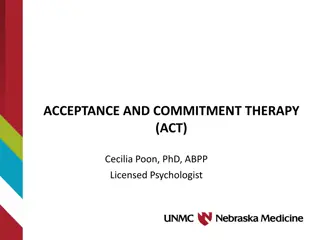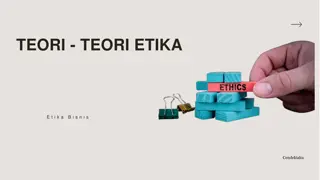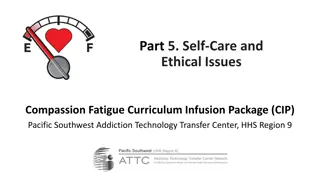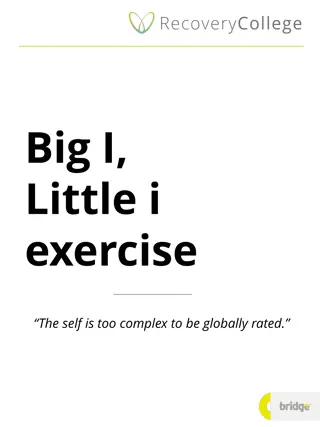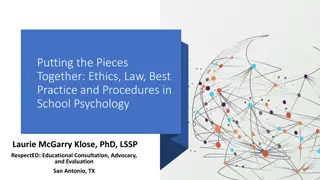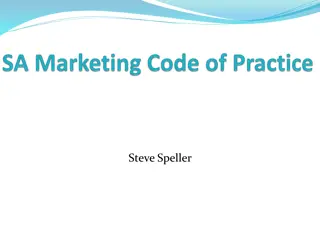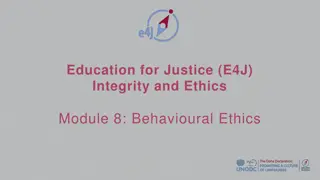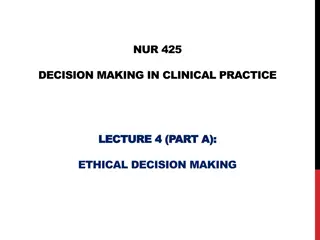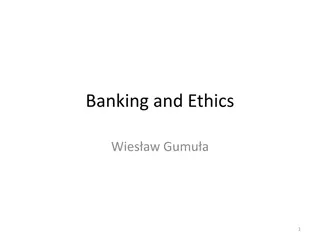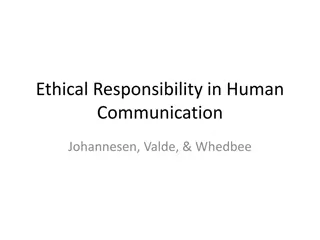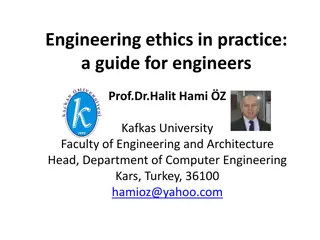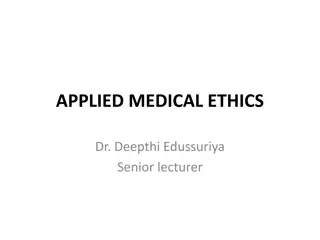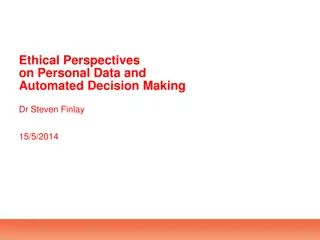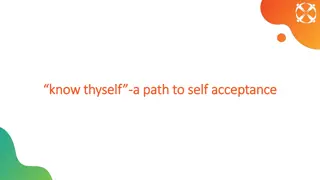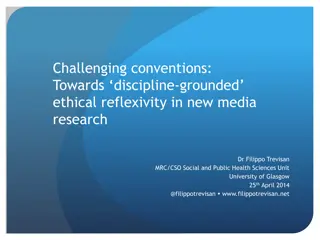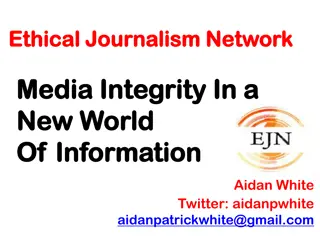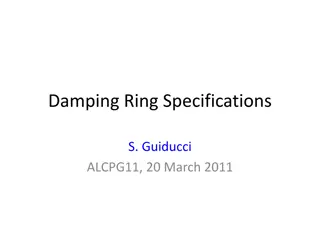Navigating Ethical Challenges in the AI Industry for Global Acceptance
In a world where AI technology is reshaping industries, Element AI faces challenges of negative stakeholder perceptions, job loss fears, privacy concerns, consumer rights issues, and potential AI abuse. To address these, recommendations include forming a self-regulatory body, open-source monitoring, Ethical AI certification, consumer education campaigns, and AI ethics courses. The SWOT analysis reveals strengths like global reach and weaknesses like historical trust issues. The aim is to ensure rapid global market acceptance of AI through ethical practices and industry standards.
Download Presentation

Please find below an Image/Link to download the presentation.
The content on the website is provided AS IS for your information and personal use only. It may not be sold, licensed, or shared on other websites without obtaining consent from the author.If you encounter any issues during the download, it is possible that the publisher has removed the file from their server.
You are allowed to download the files provided on this website for personal or commercial use, subject to the condition that they are used lawfully. All files are the property of their respective owners.
The content on the website is provided AS IS for your information and personal use only. It may not be sold, licensed, or shared on other websites without obtaining consent from the author.
E N D
Presentation Transcript
ELEMENTAI AI ETHICAL OR EVIL? GSB Consulting Group
SITUATIONAL ANAYSIS Job loss or job creation? Privacy or privilege? Positive impact through efficiencies and creative solutions Global fear, fake news, mass hysteria Servicing B2B and B2B2C Spring of AI How can ElementAI and the AI industry address the negative perception challenges to ensure rapid global acceptance?
VALUE PROMISE 3 year strategy to ensure rapid global market acceptance of AI through the formation of a Self Regulatory Body and a Consumer Education Campaign 10,000 learning institutions teaching EthicalAI 500 Ethical AI Certified companies 5 Mil views of EthicalAI campaign AI=Ethical
KEY ISSUES Negative Stakeholder Perception Job Loss Fear Armageddon Privacy Consumer rights AI Abuse + Negative Impact
RECOMMENDATIONS AI Self Regulatory Body Form global regulatory body Open source monitoring Ethical AI certification Consumer Education Campaign Marketing campaign AI Ethics Course in Universities
ANALYSIS JANE
SWOT (ELEMENT AI AND INDUSTRY) Global reach Connectivity Benefits to society Consumer understanding and targeted advertising Stigma & poor perception potential job losses, privacy etc. Reputation & lack of trust due to historical events e.g. Cambridge Analytica & Facebook abuse Public lack of understanding and education Lack of industry standards & government legislation Positive global impact Fast changing tech landscape Potential for abuse Privacy issues Manipulation of public Threats Opportunities Strengths Weaknesses Element AI: Self regulation Educating consumers Partnerships Element AI: Legislation uncertainties Lack of adoption Element AI: Team s skills & experience Global impact Customer base VC and investor backing Element AI: Lack of diversity
B2B2C Element AI serve businesses but ultimately impacts consumers Government & Unions B2C B2B Need to grow awareness and educate businesses and consumers on the benefits and threats of AI to gain trust Need for self regulation and industry standards control and monitoring body
RECOMMENDATIONS AI Self Regulatory Body Form global regulatory body Open source monitoring Ethical AI certification Consumer Education Campaign Marketing campaign AI Ethics Course in Universities
ALTERNATIVES Lobby and work with Unions to mitigate Job Loss Fear Social Impact Global AI Project
DECISION CRITERIA 2. Implementation Time 1. Feasibility 4. Stakeholder Buy-In 3. Global Impact
DECISION MATRIX Feasibility Implementation Time Global Impact Stakeholder Buy-In AI Self Regulatory Body Consumer Awareness Lobby Unions (alt) Social Impact Project(alt)
DECISION MATRIX Feasibility Implementation Time Global Impact Stakeholder Buy-In AI Self Regulatory Body Consumer Awareness Lobby Unions (alt) Social Impact Project(alt)
REC 1: AI SELF REGULATION BODY Set up board from individuals across the industry Academics Industry specialists Independent developers New standards Companies are approached to join All companies submit to live by the code of conduct All companies can advertise compliance Advertise to business communities Transparency through website
REC 1: CONSUMER EDUCATION CAMPAIGN Marketing campaign B2C Ethics courses at universities Candid interviews with real people 30 second movies Poignant moments Ideas: Every day life (uber) Small business growth Reduce carbon footprint (Fedex) Through You tube and Instagram E.g. Obama/Bill or Malinda Gates Develop the course Working with academics and developers First in IT and AI degrees to roll out Before roll out in other
REC 1: CONSUMER EDUCATION CAMPAIGN Y1 Y2 Y3 Set up board Create standards Implement standards Govern based on standards Market to business community Appoint content creator Film campaign Air campaign Develop courses Implement courses
CONCLUSION SHIVANI
FINANCE VAN ZYL
FINANCIALS: COST BUDGET & FUNDING Self-Regulatory Body: Industry Funded by industry players Considered Revenue-based and Fixed funding models % of Revenue-based model friendly to start-ups and smaller companies Marketing Campaign: Element AI Marketing Campaign 2020 2021 2022 Total Creating content Digital marketing Total 200,000 $ 75,000 $ 275,000 $ $ $ $ 100,000 150,000 250,000 $ $ $ 50,000 150,000 200,000 350,000 $ 375,000 $ 725,000 $
RISKS AND CONTINGENCIES VAN ZYL
RISKS AND CONTINGENCIES Risks Contingencies Education of trade departments of governments. Free online training programs to upskill. Jobs losses creates future negative perception. Pro-active media responses by self-regulatory body. Future security & data breaches creates bad press. Self-regulatory body to maintain legal fund to take action against offenders.
BACK TO YOUR QUESTIONS 4. 1.Who do you think is our target audience? 2.How do we as a company and as an industry promote the opportunities created by AI yet address the perceived downsides? 3.What are the risks associated with that and what are the risks if we don t address it? Who are our natural and unnatural partners in creating this change?
CONCLUSION SHIVANI
VALUE PROMISE 3 year strategy to ensure rapid global market acceptance of AI through the formation of a Self Regulatory Body and a Consumer Education Campaign 10,000 learning institutions teaching EthicalAI 500 Ethical AI Certified companies 5 Mil views of EthicalAI campaign AI=Ethical
